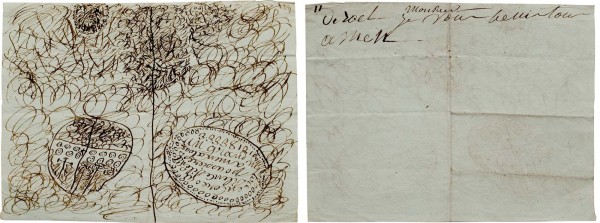Coming from four generations of wood sculptors, Théophile Bra taught sculpture in Paris. In 1818 he won the second Prix de Rome and received important official orders for prestigious Parisian monuments and religious statues under the Restoration and the July Monarchy. His works are preserved in various churches in Paris, the Museum of Versailles, Lille, Valenciennes and the Chartreuse Museum in Douai. As an uncompromising and visionary being of complex spirituality he totally belongs to Romanticism: he was both Bonapartist and Anglophile, Christian, a follower of Swedenborg, a Freemason (he belonged to the lodges of Paris, Lille and Douai between 1825 and 1840), and an admirer of Judaism and Eastern religions. His inspiration evokes the fantastic universe of Francisco de Goya, William Blake and Victor Hugo. He is the author of a diary, L’Évangile rouge, which recounts his mystical experiences from 1826 to 1829 while frequenting the Swedenborgian circles – we can find there the description of surprising hallucinations which the doctors of that period saw as close to madness. He bequeathed to the city of Douai significant archives containing hundreds of boxes and albums filled with compulsive writings as well as five thousand drawings associated with texts. While they recall Johann Füssli or Blake, these drawings escape any attempt at classification. Some of them have been exhibited in the United States and France.
